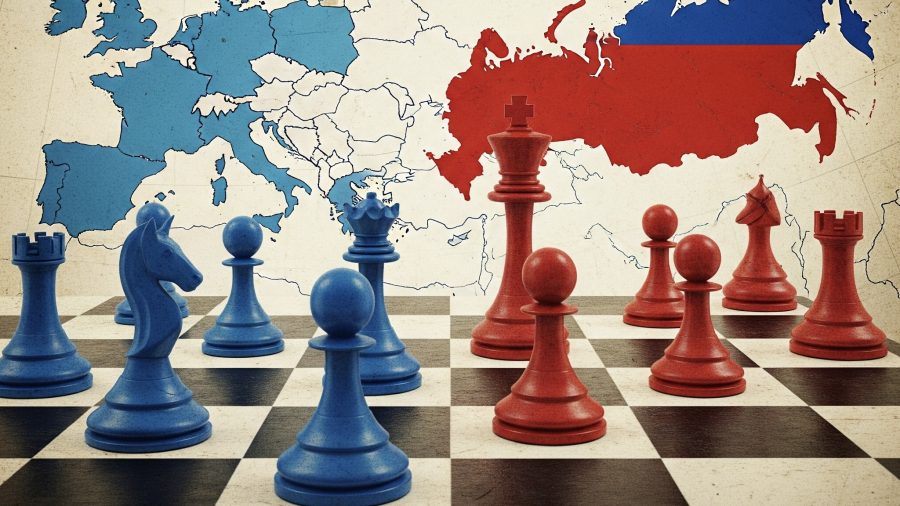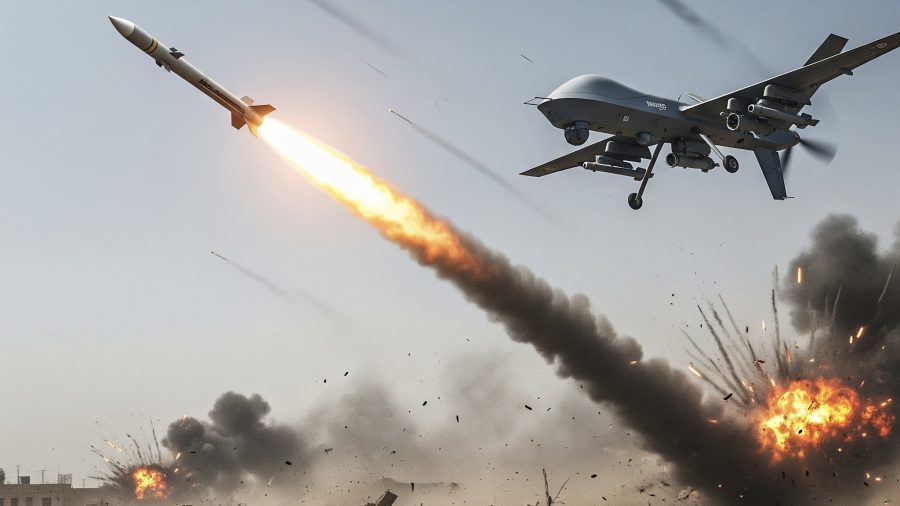The United Kingdom’s commitment to the Global Combat Air Programme (GCAP), in partnership with Italy and Japan, represents the most significant defence investment decision of this generation. Faced with an increasingly contested and volatile world and the limitations of current air power assets against proliferating advanced threats, the UK seeks a sixth-generation capability intended to secure air dominance and strategic advantage well into the mid-21st century. This analysis contends that while the strategic desire for GCAP is understandable, particularly the drive for sovereign capability, its necessity hinges critically on unproven technological assumptions, optimistic cost and schedule projections, and a specific view of future warfare that may not materialise. Therefore, continued UK participation should be contingent on meeting stringent, pre-defined cost, schedule, and capability gateways, with failure triggering consolidation or cancellation.
Defining the Sixth-Generation Ambition
GCAP aims to deliver more than just a replacement for the RAF’s Eurofighter Typhoon; it embodies a conceptual leap towards a ‘system of systems.’ The envisioned capability includes a core manned stealth platform (‘Tempest’) acting as a command node, integrated with uncrewed Collaborative Combat Aircraft (CCAs or ‘loyal wingmen’), all connected via a resilient ‘combat cloud’. Key technological differentiators include advanced AI for data fusion and decision support, next-generation sensors providing unprecedented situational awareness (such as the developmental ISANKE/ICS suite), adaptive engines offering performance flexibility, and an open systems architecture for rapid upgrades. This technological ambition, pursued trilaterally under dedicated governmental (GIGO) and industrial joint venture structures headquartered in the UK, aims to deliver not just an aircraft, but a step-change in air combat capability by its ambitious 2035 target date. However, this vision immediately flags a core vulnerability: the entire concept is critically dependent on secure, high-bandwidth connectivity that is a prime target for adversary electronic warfare and cyber-attacks.
Strategic Rationale
GCAP is positioned as essential for UK grand strategy, aligning with the Integrated Review’s goals of technological advantage, global power projection (including the Indo-Pacific tilt), and contributing high-end capability to NATO. A primary driver is the pursuit of national sovereignty – defined as “Freedom of Action” and “Freedom of Modification” – avoiding dependence on allies, particularly the US. Past experiences, such as reported US control over integrating certain UK weapons onto the F-35 platform, fuel this desire for independent control over critical capabilities.
Yet, this pursuit of sovereignty within a deeply collaborative international programme creates inherent tensions. True freedom of action requires open technology sharing between partners, potentially conflicting with national industrial interests or security concerns, as highlighted by recent Italian ministerial comments about UK reluctance on tech access. Furthermore, the incorporation of some US subsystems – for example, advanced Gallium Nitride (GaN) transmitter modules crucial for next-generation radar and electronic warfare systems, which often fall under strict US export controls – could still subject GCAP to US ITAR restrictions. This would potentially negate the desired export freedom and sovereignty regardless of trilateral agreements. The strategic question is whether the immense premium paid for national control via GCAP outweighs the proven capability and interoperability benefits of alternatives, like an expanded F-35 fleet.
Military Utility
The core military case for GCAP rests on its ability to operate in the most highly contested environments anticipated post-2035, specifically penetrating and dismantling advanced Integrated Air Defence Systems (IADS). This high-end SEAD/DEAD mission is presented as a capability gap that existing platforms cannot fill. Enhanced range, beneficial for UK global deployments, is another selling point. However, the likelihood of the UK needing to conduct such demanding missions unilaterally is debatable.
Many analysts wonder if cost justifies niche capability. Could upgraded Typhoons (contingent on successful ECRS Mk2 radar integration) and the existing F-35 fleet, armed with next-generation stand-off missiles and supported by more numerous, cheaper drones, achieve strategically sufficient effects against likely threats? While GCAP promises the ultimate air dominance tool – a bespoke rapier for peer conflict – the UK might derive better overall utility from a more flexible, affordable mix of capabilities resembling a Swiss Army knife.
Costs
Transparency on GCAP’s ultimate cost remains elusive. The UK has committed £2 billion initially and budgeted £12 billion over the next decade, while partner estimates suggest a total programme investment potentially exceeding €40 billion by 2035 merely to reach initial production. Unit fly-away cost estimates are highly speculative but frequently placed in the £150-£250 million range per core aircraft – significantly higher than the F-35B. This excludes the substantial costs of developing and procuring the necessary CCA fleets – with public estimates for ‘loyal wingman’ concepts varying widely, typically between £5 million and £25 million per drone – plus ground infrastructure, and network hardening.
Illustrative Unit Cost Impact (UK Share – Hypothetical 100 core aircraft buy):
- @ £150m/unit: £15 billion procurement
- @ £200m/unit: £20 billion procurement
- @ £250m/unit: £25 billion procurement (Note: Illustrative procurement costs for core platform only, excluding R&D share, CCA costs, and lifetime support)
This level of expenditure inevitably forces stark choices. Within defence, it competes directly with funding for the Royal Navy, the Army’s modernisation, and crucial investments in space and cyber domains. Outside defence, this sum dwarfs spending on critical public services. The opportunity cost is immense, demanding certainty that GCAP delivers uniquely essential capability unavailable through less expensive means.
Industrial Strategy vs. Economic Reality
The argument for GCAP often leans heavily on industrial benefits: sustaining the UK’s sovereign combat air sector, supporting tens of thousands of high-skilled jobs, driving R&D, and enabling exports. Partnering with Italy and Japan is key to achieving the scale necessary for viability. However, large defence programmes create path dependency, making it politically difficult to cancel or curtail the programme even if strategic or financial justifications weaken. The programme must deliver genuine value for money, not just serve as industrial life support.
Technological Risk
GCAP is predicated on successfully mastering multiple cutting-edge technologies concurrently, presenting significant risk. Key areas include:
- Adaptive Engines: Achieving a mature, reliable variable-cycle engine certified for flight by the required date remains a major hurdle, with full demonstrator engines yet to complete testing. Risk: High
- AI/Autonomy: Developing certifiable AI for mission-critical functions and effective human-machine teaming is technologically complex and ethically challenging. Integrating this seamlessly with CCA control adds layers of difficulty. Risk: High
- Stealth & Materials: Achieving next-generation broadband stealth requires advanced materials and manufacturing techniques still scaling up. Risk: Medium
- Networking & Software: Creating a secure, resilient, interoperable ‘combat cloud’ integrating systems from three nations is the highest risk area, prone to delays and vulnerabilities. Risk: Very High
Failure or significant delay in any one of these critical paths will derail the entire programme or force capability compromises that undermine its rationale. The F-35’s protracted software development provides a stark warning.
Systemic Vulnerabilities and Integration Challenges
The network-centric ‘system of systems’ concept, while powerful in theory, is inherently vulnerable. The reliance on continuous data flow makes the combat cloud a prime target for jamming, cyber-attack, and kinetic strikes against space assets. Ensuring resilience requires costly hardening measures often excluded from baseline programme costs. Integrating GCAP effectively with legacy UK platforms (Typhoon, F-35B) and wider NATO systems presents significant technical hurdles, particularly regarding secure data-link compatibility. Furthermore, the parallel, nationally-led development of CCAs creates a major integration risk – ensuring these vital adjuncts are ready, affordable, and fully interoperable by 2035 is far from guaranteed.
Failure Scenarios
While outright cancellation carries severe consequences – a major capability gap as Typhoons retire (whose operational life depends on successful upgrades), industrial collapse, and irreparable diplomatic damage – significant delays also pose serious threats. A slip of 2-5 years past the 2035 IOC would necessitate costly life-extension programmes for the Typhoon fleet, potentially overlap awkwardly with F-35B support cycles, and could force a reconsideration of procuring land-based F-35As for the RAF to bridge the gap. Such delays would inevitably inflate overall programme costs and erode partner confidence, risking a slow collapse.
A Framework for Managing the Risks
Given the immense stakes and inherent uncertainties, the UK requires clear decision points and off-ramps for GCAP. Continued investment should be conditional:
- Sovereignty Definition: Explicitly define the specific sovereign modification and action freedoms GCAP must deliver (beyond F-35 limitations) and verify these are achievable without ITAR constraints on core systems.
- Budgetary Ceiling & Trade-offs: Establish a firm ceiling for the UK’s total R&D and procurement contribution, linked to clear decisions in the upcoming Strategic Defence Review on which other capabilities will be curtailed or cancelled to fund it.
- Performance Gates & Kill-Switch: Define non-negotiable technical milestones (e.g., successful demonstrator flight by 2027/28, integrated core systems test by 2030) and cost/schedule thresholds. A breach beyond a pre-agreed margin (e.g., 20% cost overrun or 2-year schedule slip by 2028-2030) should trigger an automatic review with consolidation or cancellation as default options unless compelling justification for continuation is presented.
Conclusion
Does the UK need GCAP? Ultimately, yes. Given that maintaining a fully independent capability to defeat the most advanced air defences globally post-2035 is a non-negotiable strategic requirement, and the industrial and geopolitical benefits of leading a trilateral programme outweigh the risks, then GCAP becomes a strategic necessity. However, this necessity is predicated on assumptions about future threats, technological feasibility, cost control, and partner reliability that are far from certain.
It is not a programme to be pursued out of blind faith or industrial inertia. Proceeding demands rigorous scrutiny, transparent accounting, realistic assessment of alternatives, and clearly defined performance metrics with consequences. Without such discipline, the UK risks pouring vast resources into a programme that, while technologically dazzling, may arrive too late, cost too much, or address yesterday’s perceived threats, ultimately failing to deliver the security it promises. The strategic wager has been placed. Ensuring it doesn’t break the bank requires vigilance, realism, and the political courage to fold if the odds turn decisively against it.
Bibliography
BAE Systems. “Assessment of the expected economic impact of the Future Combat Air System programme (2025-2070)” Accessed via BAE Systems website, October 28, 2024.
BAE Systems. “GLOBAL COMBAT AIR PROGRAMME. ” BAE Systems Media. Accessed April 22, 2025.
Bronk, Justin. “The Global Combat Air Programme is Writing Cheques that Defence Can’t Cash | Royal United Services Institute.” RUSI Commentary, April 27, 2023.
Bronk, Justin. “Integrating Typhoon and F-35: The Key to Future British Air Power.” RUSI Defence Systems, February 2016.
Bronk, Justin. “Large, Crewed Sixth-Generation Aircraft Have Unique Value in the Indo-Pacific.” RUSI Commentary, March 5, 2025.
Bronk, Justin. “Unlocking Sixth-Gen Air Power: Inside the Military Capability for GCAP.” RUSI Commentary. Accessed April 22, 2025.
Cranny-Evans, Sam, and Justin Bronk. “How Export Controls Endanger the West’s Military Technology Advantage.” RUSI Commentary, August 2, 2024.
House of Commons Library. “The forthcoming strategic defence review 2025: FAQ.” Research Briefing CBP-10153, March 26, 2025.
House of Commons Library. “What is the Global Combat Air Programme (GCAP)?” Research Briefing CBP-10143. Accessed April 22, 2025.
IAI (Istituto Affari Internazionali). “New Partnership among Italy, Japan and the UK on the Global Combat Air Programme (GCAP).” IAI Papers 25 | 03 – March 2025.The
Japan, Ministry of Defense. “Global Combat Air Programme.” MoD Website. Accessed April 22, 2025.
The Aviationist. “The GCAP Program: A Step Toward Europe’s Military Autonomy and Interoperability.” March 17, 2025.
The Aviationist. “Delivering GCAP by 2035 Is Not Easy as it Needs to Break the Mold and Avoid Mistakes, Says UK Report.” January 15, 2025.
UK Defence Journal. “Report highlights challenges for new British stealth jet.” January 14, 2025.
UK Government. “Defence’s response to a more contested and volatile world.” Defence Command Paper 2023. Accessed April 22, 2025.
UK Government. “Integrated Review Refresh 2023: Responding to a more contested and volatile world.” Accessed April 22, 2025.
UK Parliament. Committees. Defence Committee. “Global Combat Air Programme. ” HC 598, January 14, 2025.
Watkins, Peter. “The Damage from Doubt: Labour’s Clumsy Handling of the GCAP Programme | Royal United Services Institute. ” RUSI Commentary, September 12, 2024.
Zona Militar. “Italy accuses the United Kingdom of not sharing key technologies for the development of the new sixth-generation GCAP fighter.” April 21, 2025.








